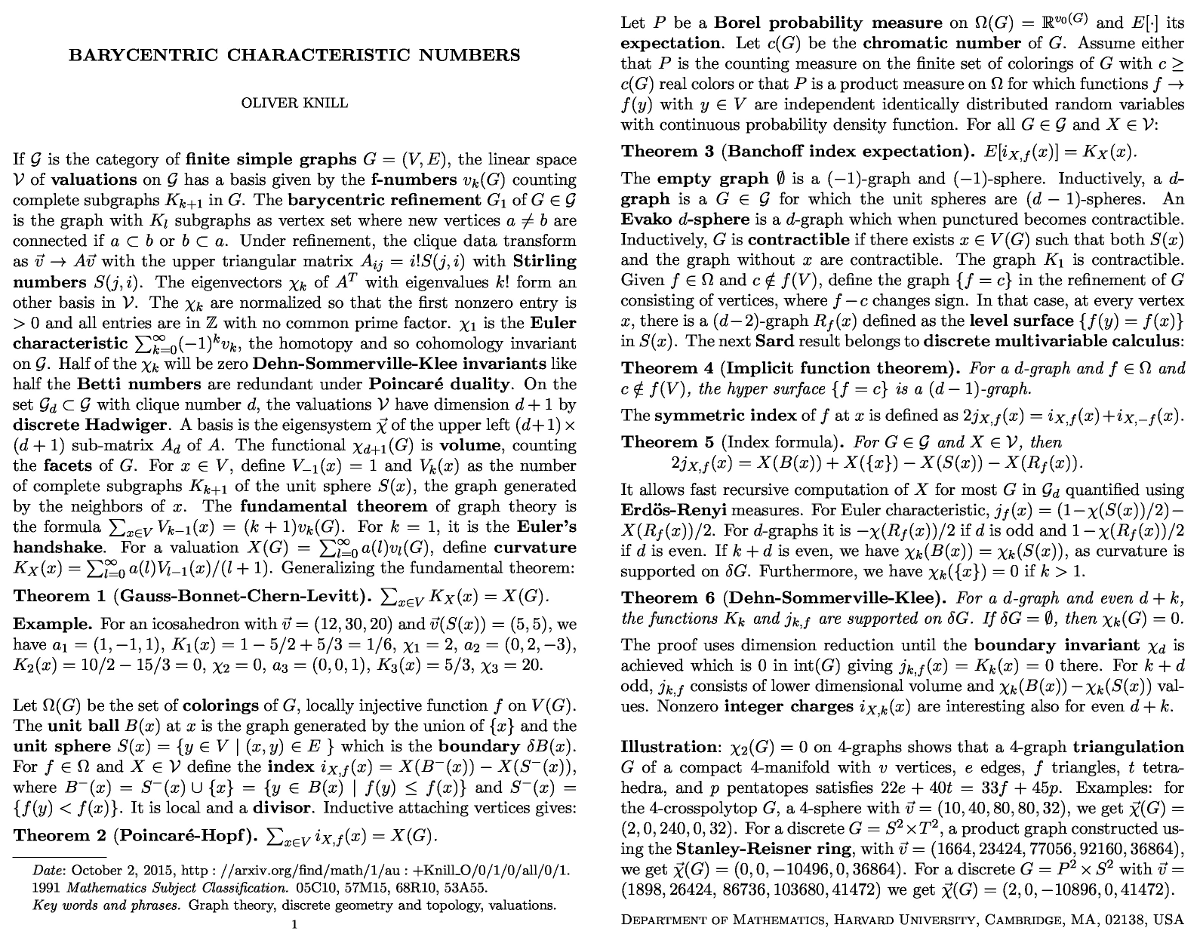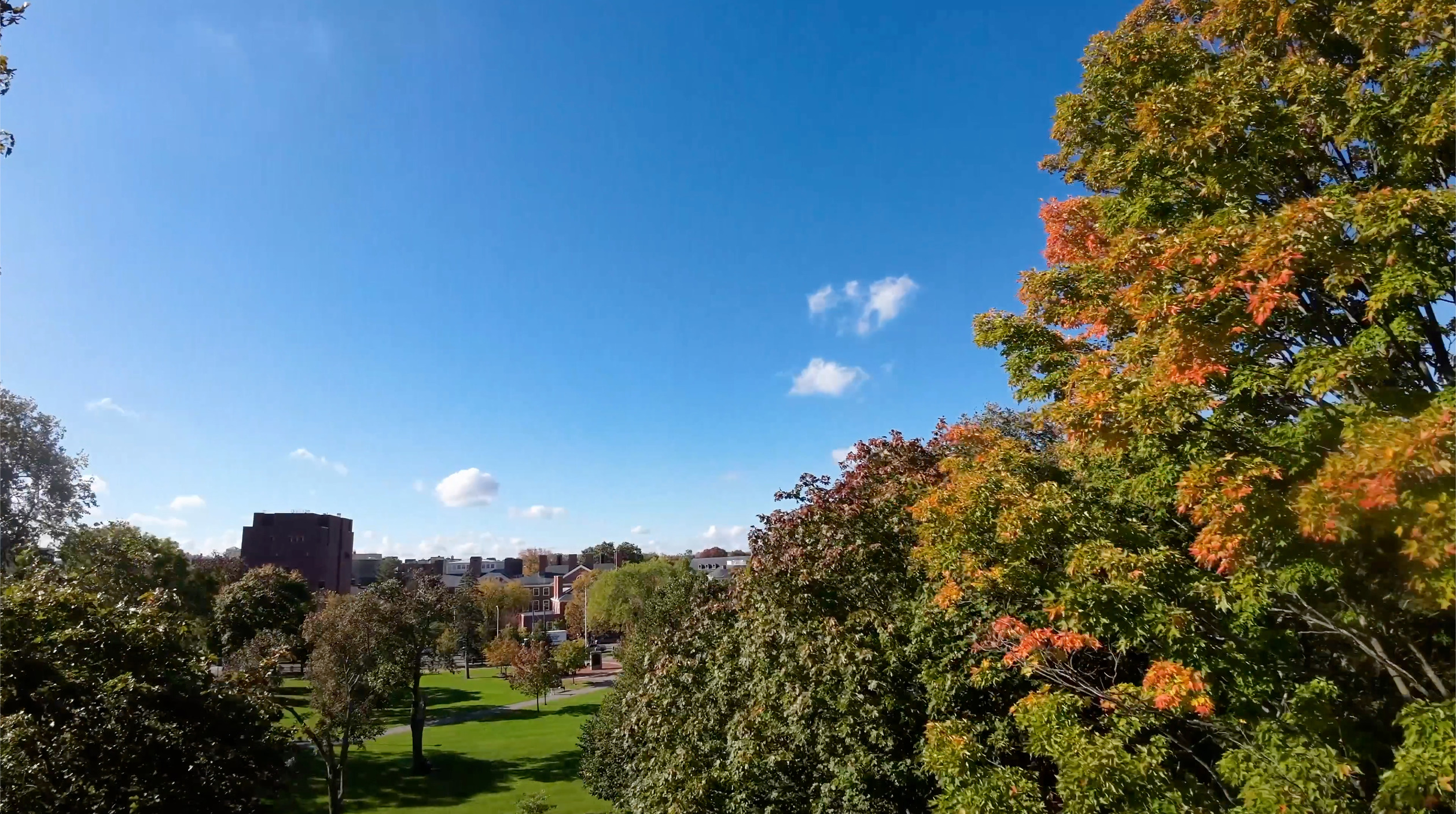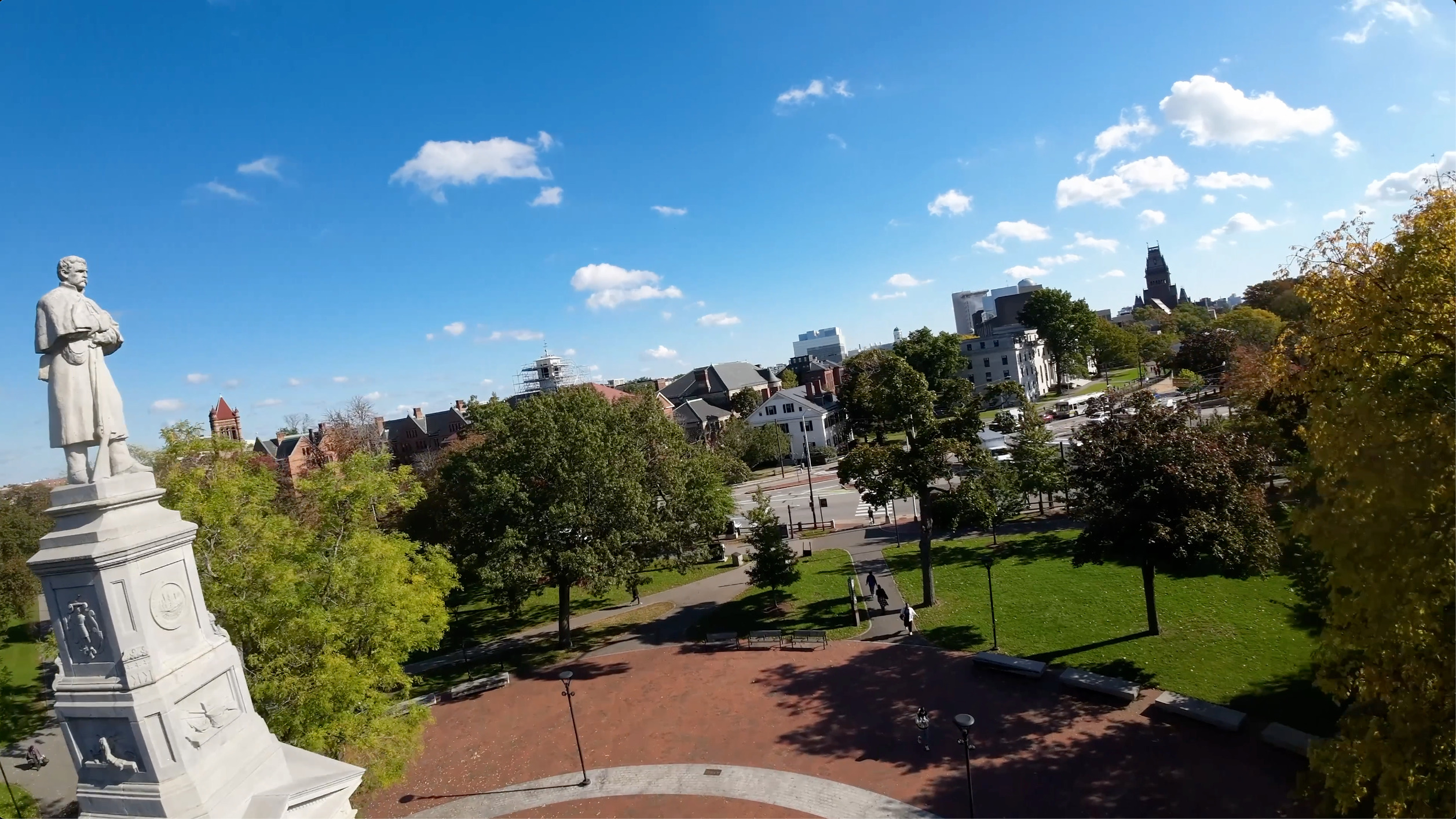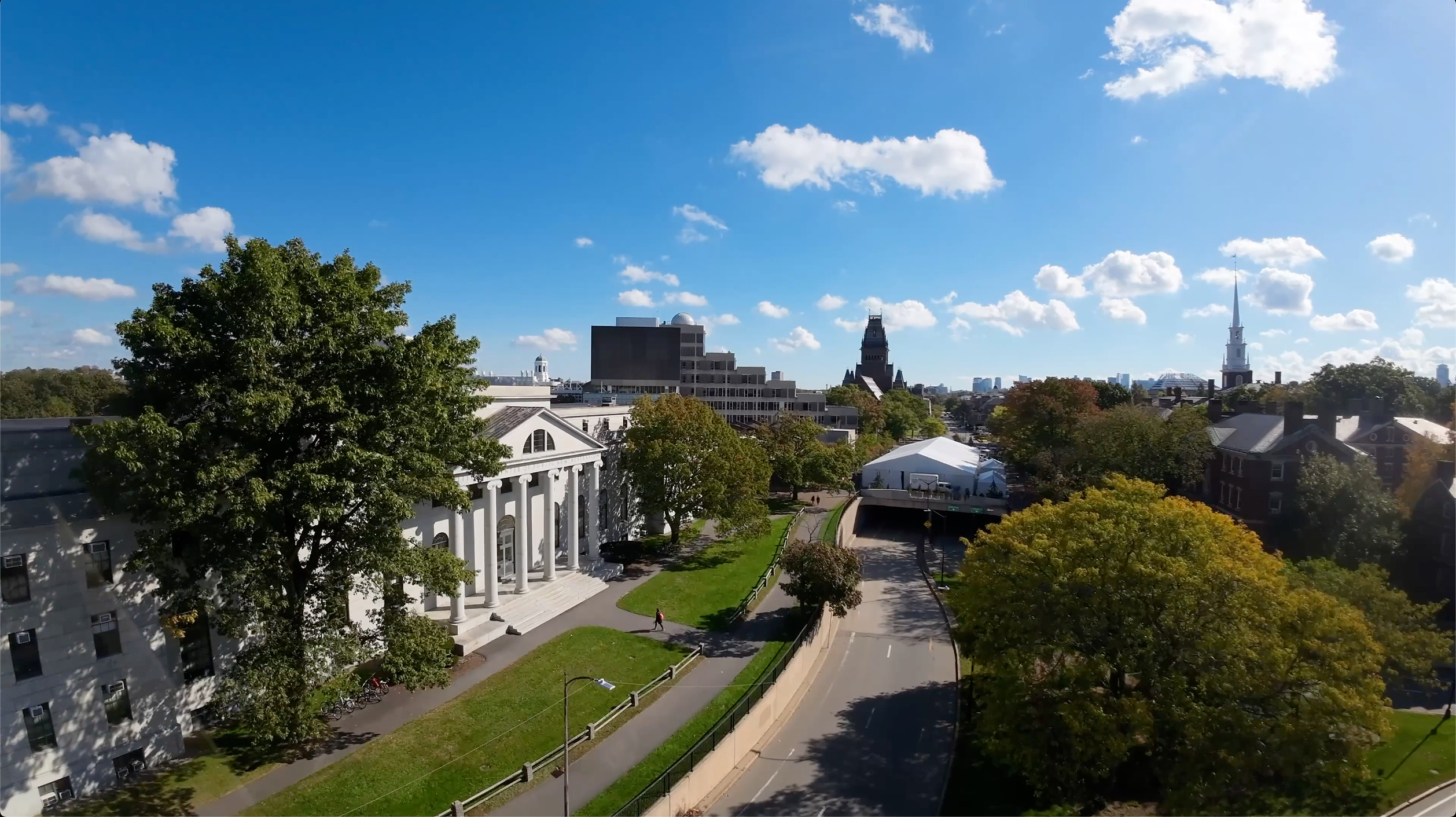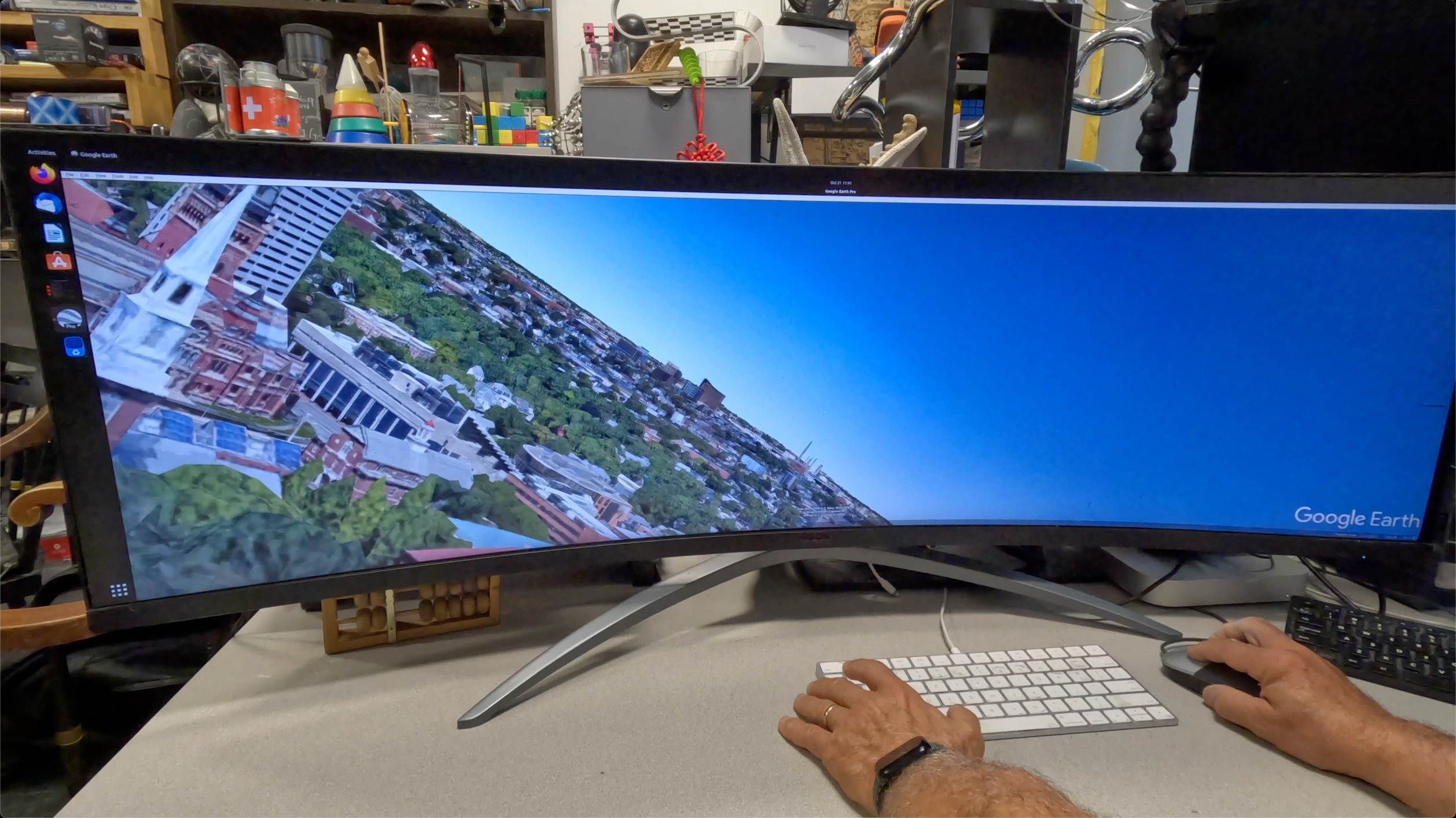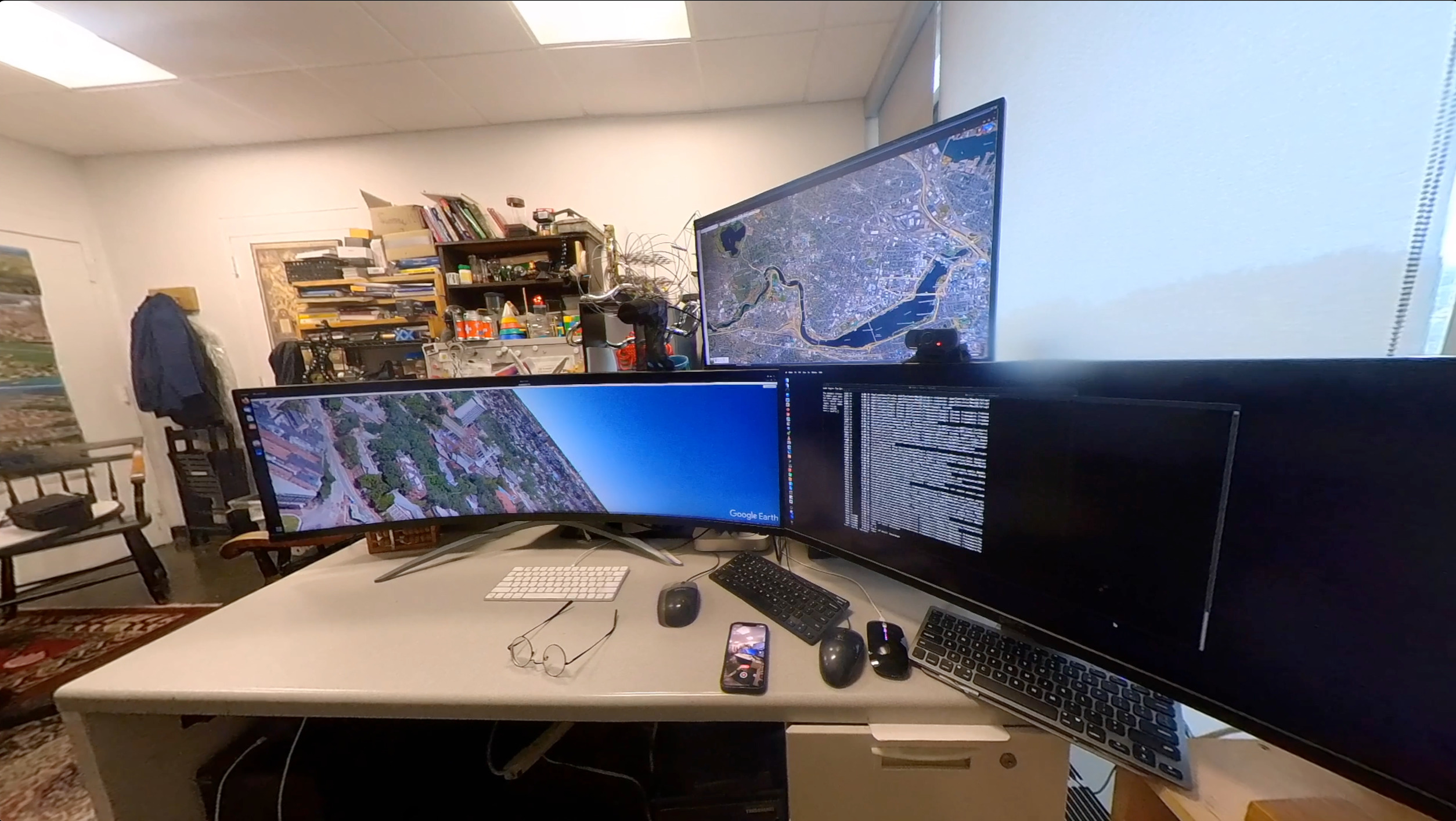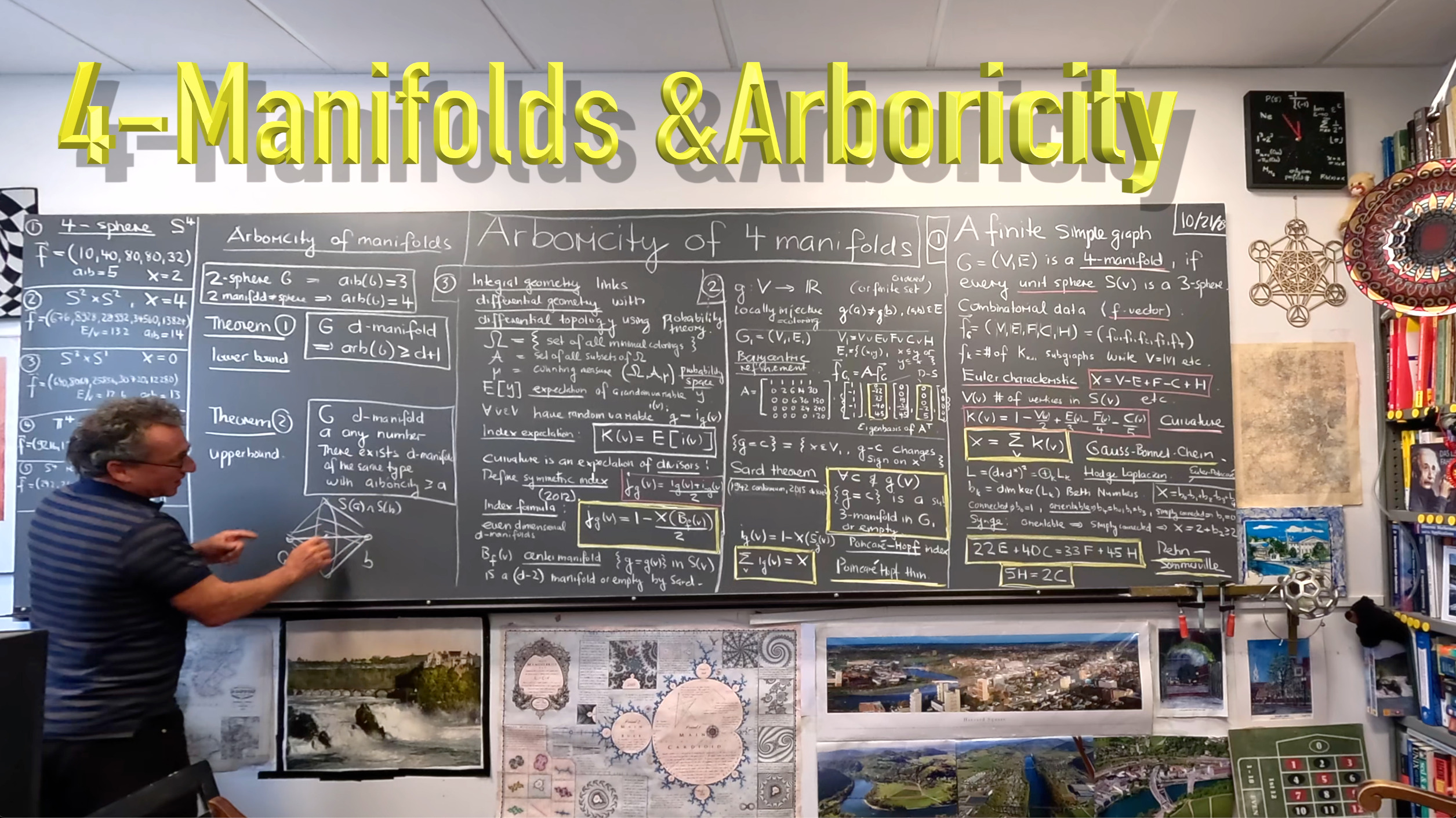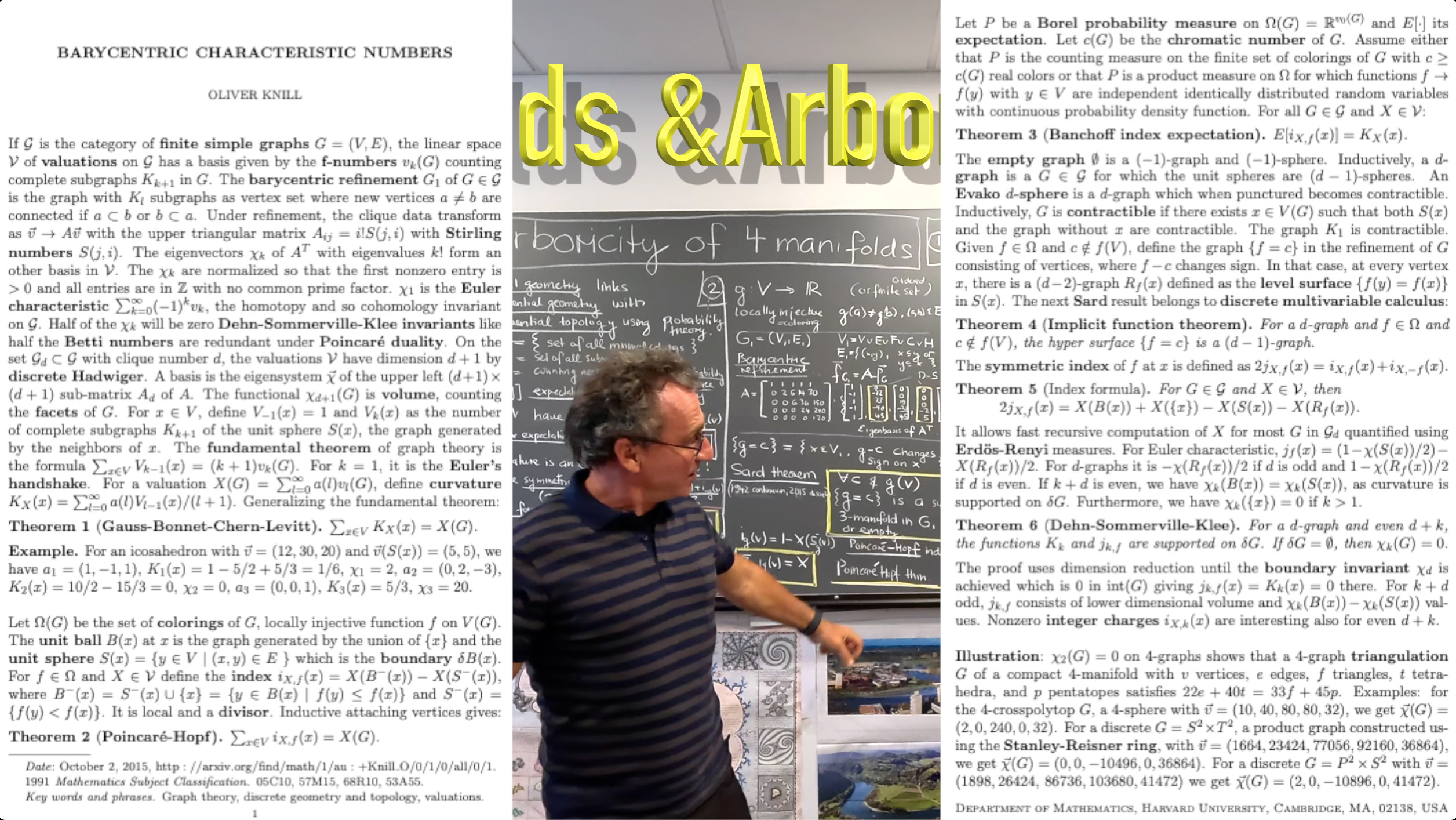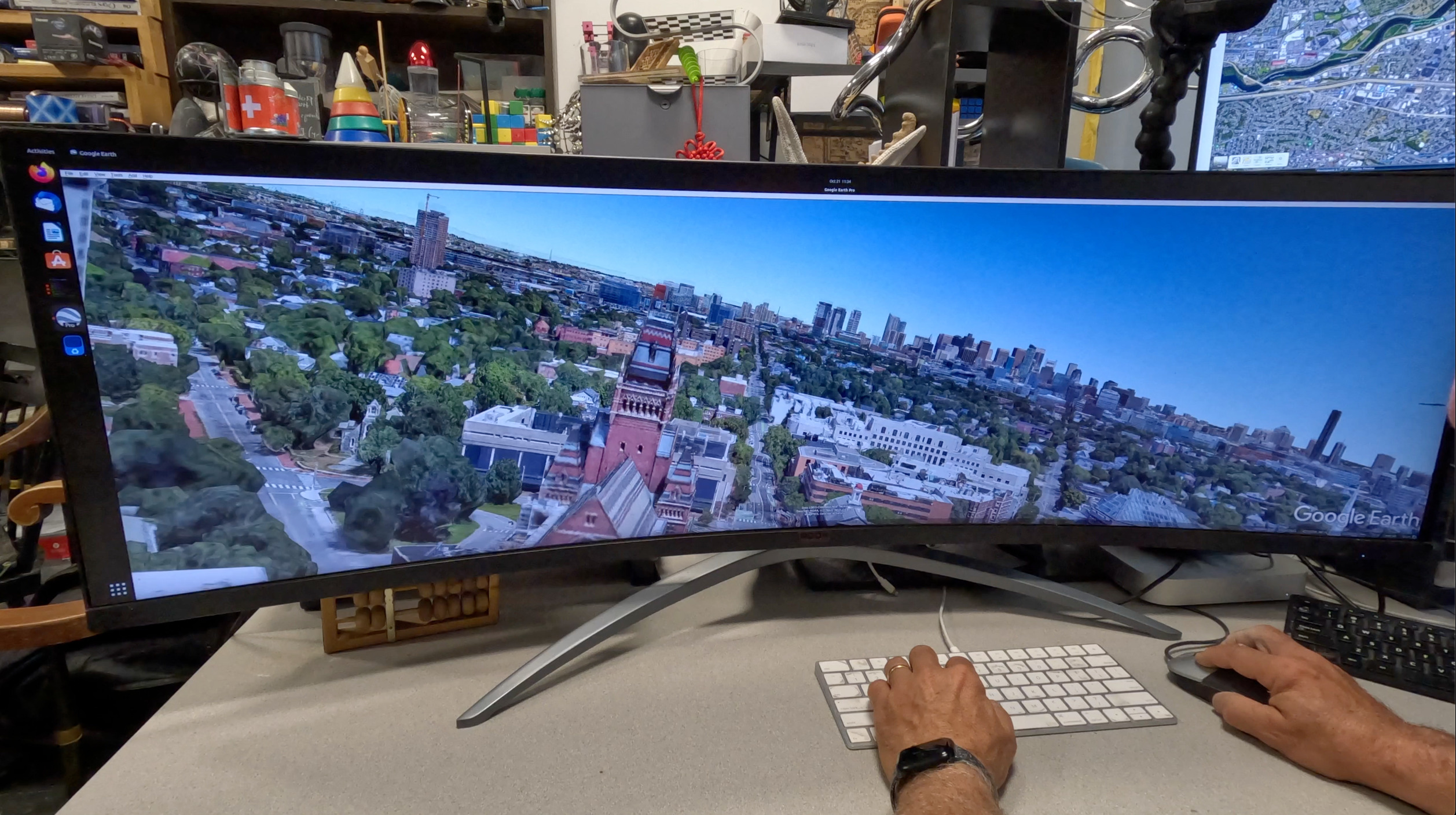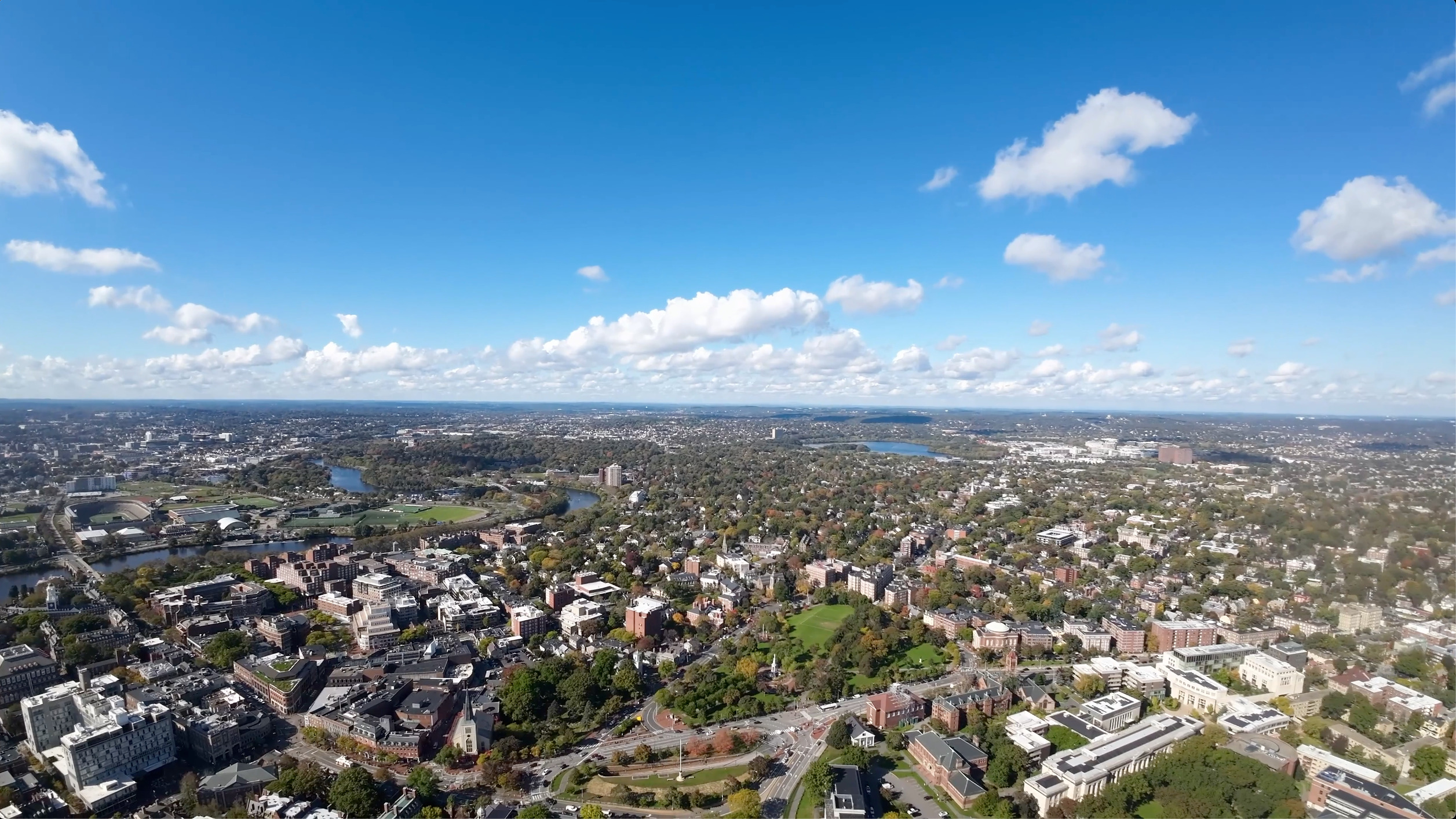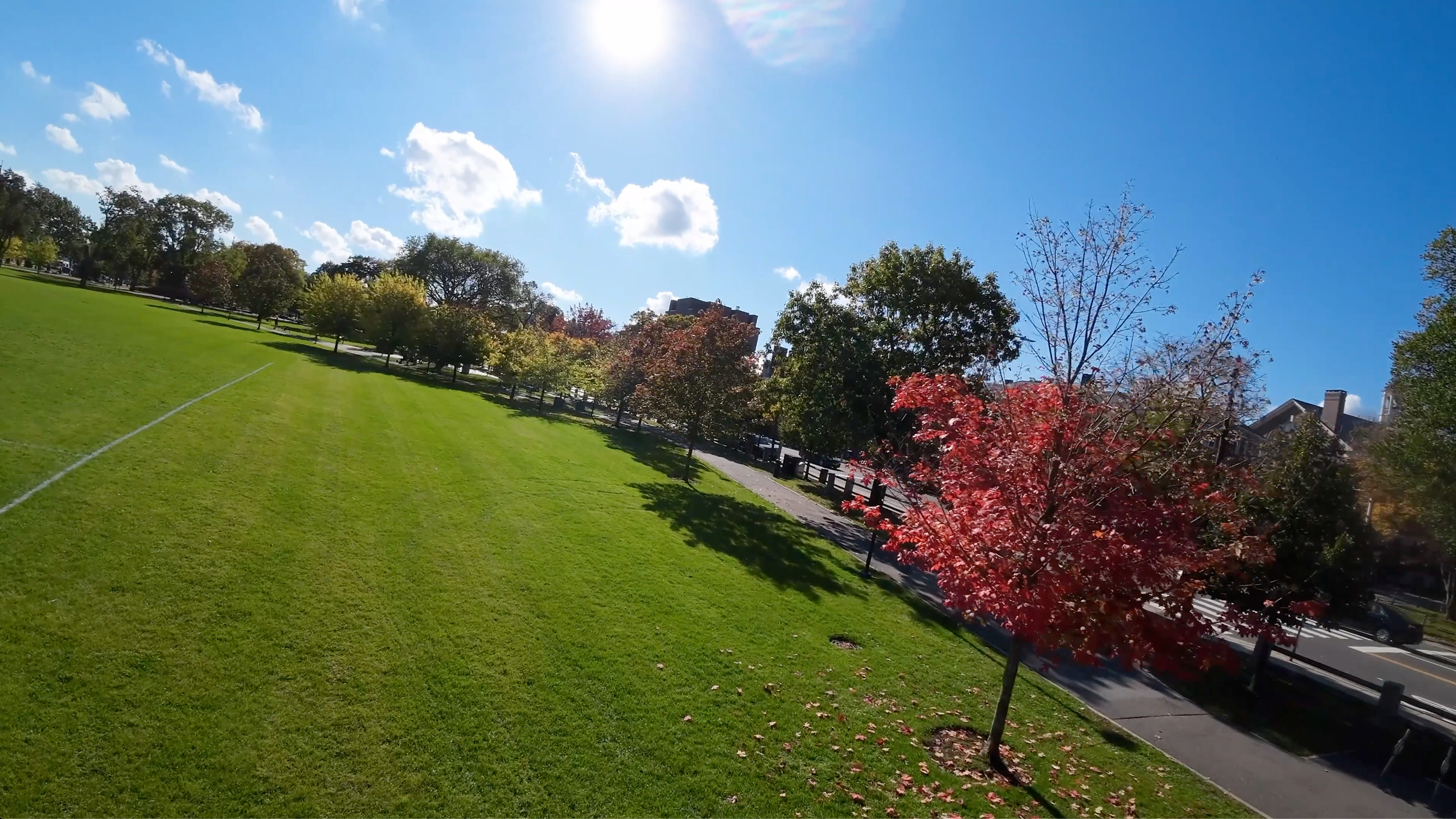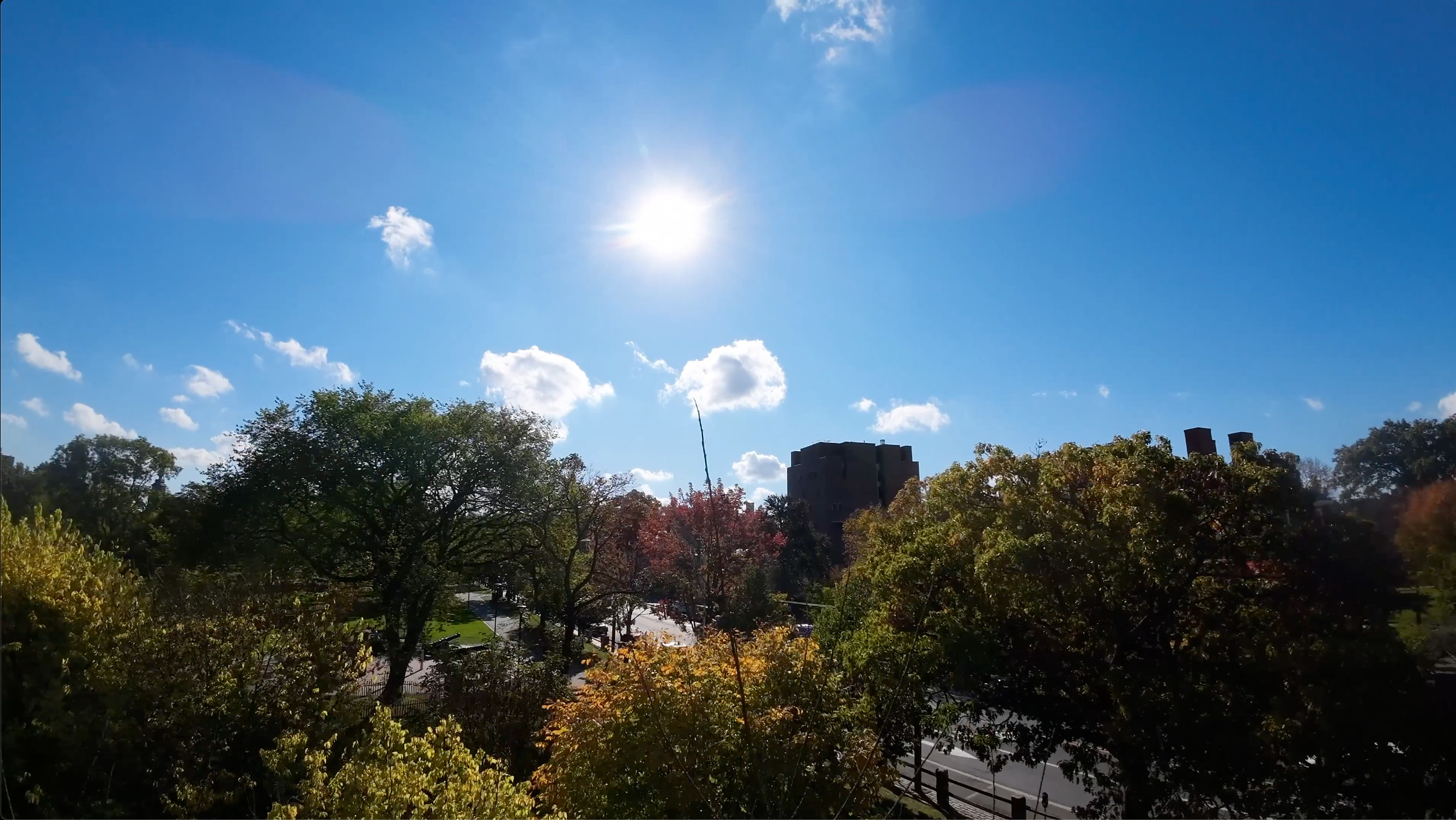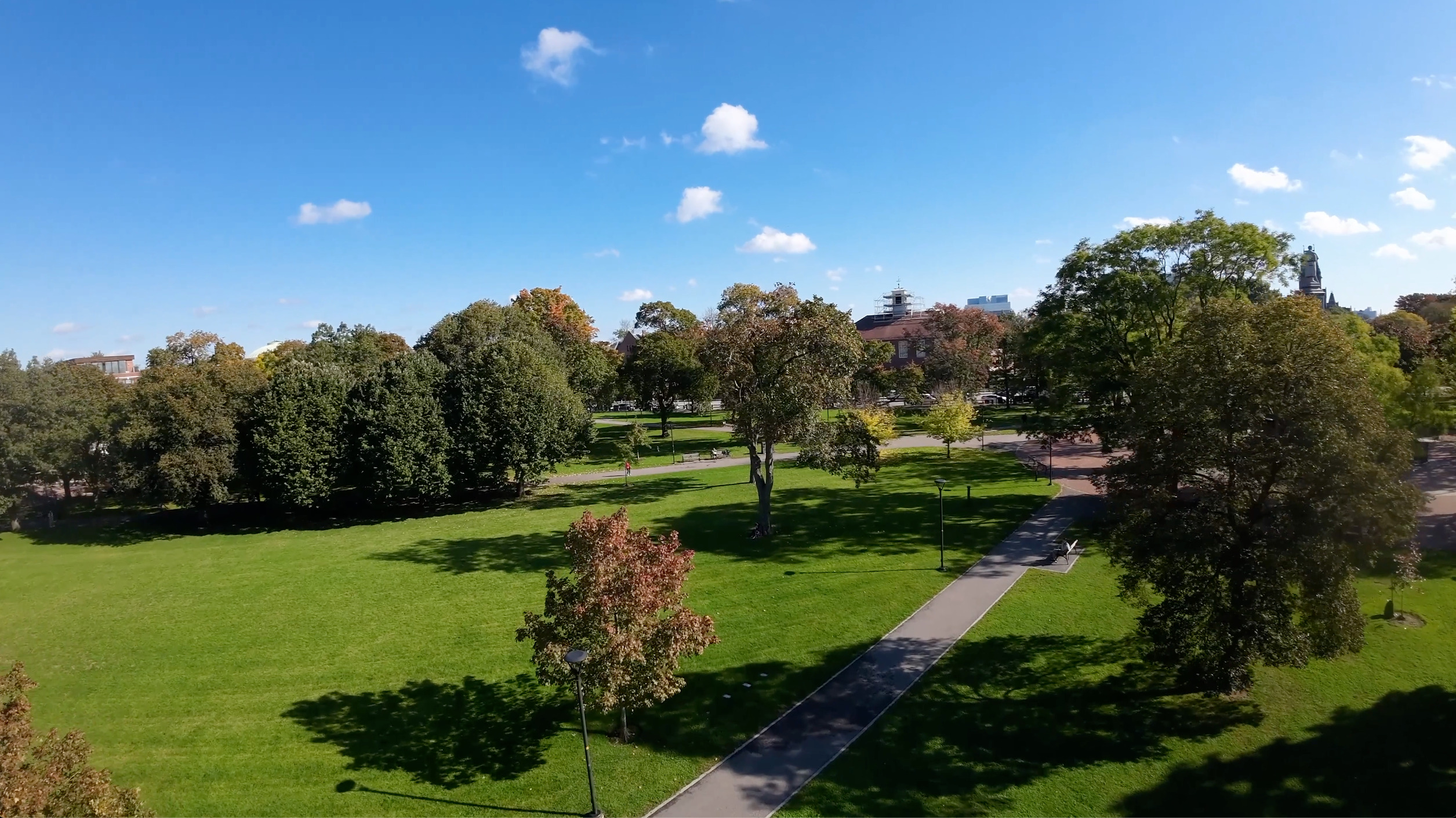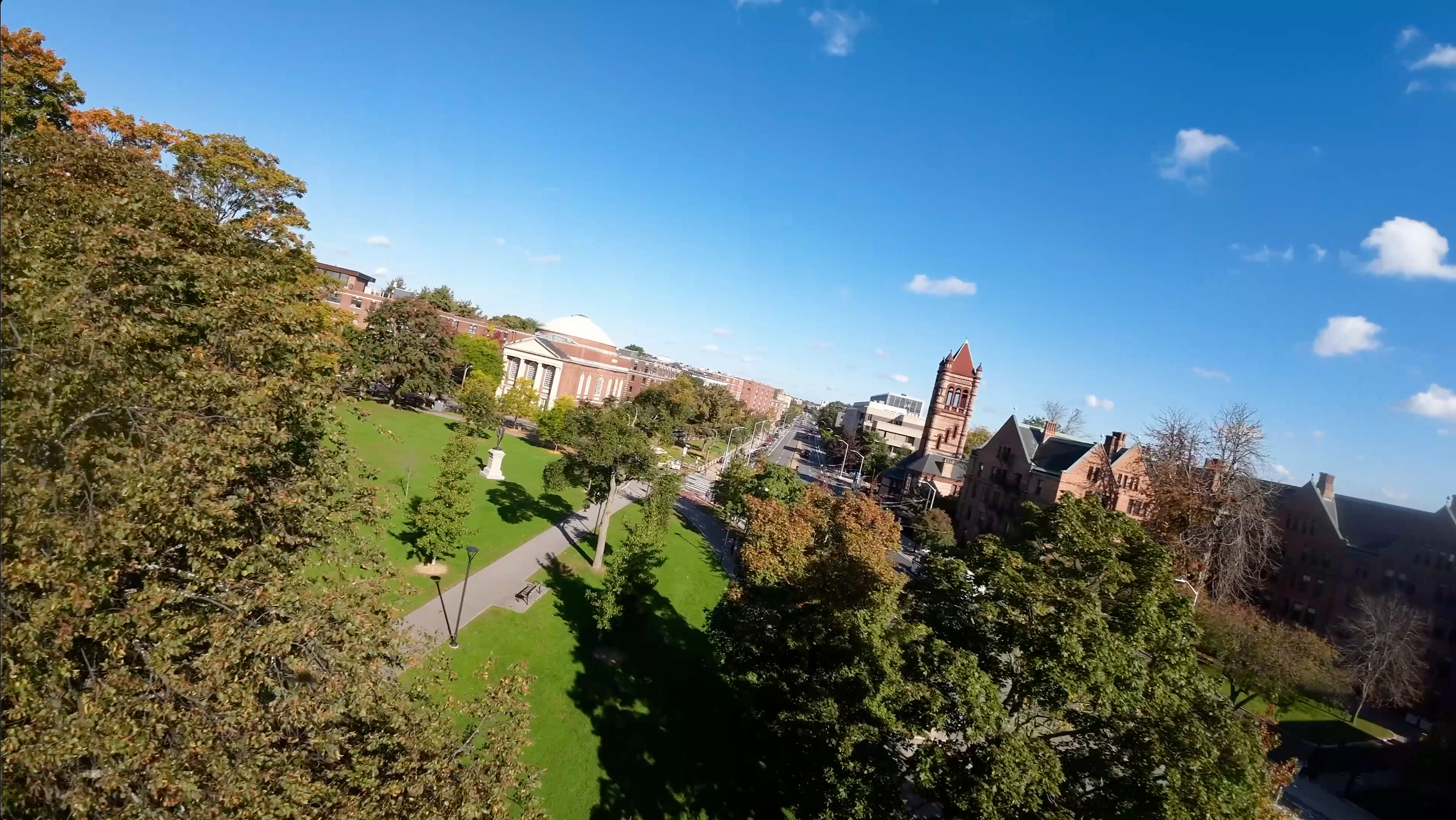One of the nice things to work in a subject not having grown up in is to be in steep learning curves. I have thought about the arboricity of manifolds for a while now but the fact that the arboricity can be arbitrary large for d-manifolds with d larger than 2 came a bit as a surprise. The real reason are co-dimension 2 spheres which in dimension 2 always have bounded cardinality 2 while in dimension higher can have arbitrary large cardinality. Codimension 2 spheres appear naturally when looking at the intersection of neighboring unit spheres.
I originally also had thought to add some remarks about 4-manifolds and so essentially went along the content of the following 2 page paper which I had worked very hard on to get as short as 2 pages. There are a few places, where the work is more detailed like “Universality for Barycentric Subdivision”, “Barycentric Characteristic numbers” [PDF], “Spectra and invariants under Barycentric subdivision (youtube)”. For the Gauss-Bonnet-Chern result in the discrete, see this paper from November 2011 or this paper generalizing it to multi-linear valuations like Wu Characteristic. For Dehn-Sommerville and Gauss-Bonnet, see this paper. For Poincare-Hopf for graphs, see here from January 2012 or index expectation from February 2012. In 2014, a variant uses a finite probability space of functions (the space of all colorings): see curvature from graph colorings. here is the tweeted 2 page version, where I had spent most of the time to get things down to 2 pages. (Here is my tweet from 2015). And here is the September 20 2015 tweet mentioning 22E+40G=33F+45H.
Update: A draft of the new paper [PDF] But back, here is the tweeted picture of the 2015 attempt to write things down on 2 pages:
